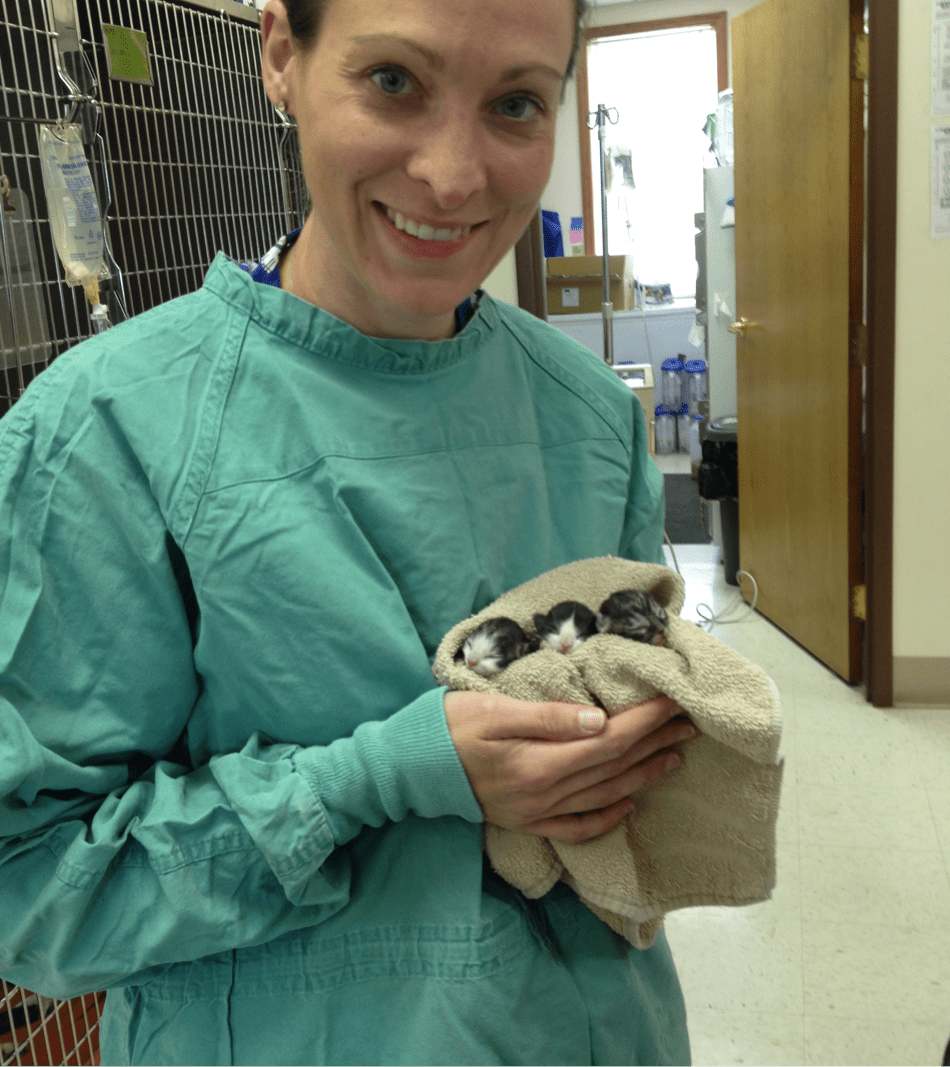Diabetic dogs are initially presented for drinking and urinating more, weight loss and occasionally blindness (development of cataracts).
The physical exam on a healthy diabetic is generally unremarkable. They are often obese, with a history of weight loss, they may have a large liver, the hair coat may be abnormal.
Dogs are typically diagnosed with diabetes between ages 7-9 years old. There is a genetic predisposition in some breeds (Samoyed, Cairn and Tibetan terriers) and female dogs are twice as likely as males to develop diabetes.
Other illness that should be considered with these signs and physical exam findings are hyperthyroidism (rare in dogs), intestinal malabsorption/ maldigestion, inflammatory bowel disease or early lymphoma. To make a diagnosis a CBC, serum chemistry, and a urinalysis is preformed. If there is a blood glucose greater than ~250 with glucose in the urine then you can discuss starting treatment. Any additional evidence of illness found on these tests should also be addressed as it will interfere with glucose regulation, this could be a urinary tract infection of elevated ketones among other conditions.
Diabetes is not curable in dogs and will require twice daily insulin injections for the rest of the dogs life. This means there will be ongoing costs incurred for insulin, syringes, prescription food, and monitoring with kits like the AlphaTRAK 3 Blood Glucose Monitoring Starter Kit. Regular veterinary visits are essential to maintain ongoing control of blood glucose levels. Once your pets blood sugar is well controlled, exams and testing will be required every 6 months moving forward.
The initial treatment goal is to manage the clinical signs related to the disease. Treatment includes twice daily insulin injections (several insulin types are available), diet (often times prescription diets aid in glucose regulation-complex carbohydrates), exercise reduces insulin requirement.
Anytime insulin therapy is initiated or changed the animal should be allowed to equilibrate at home for a week before the response to insulin therapy is assessed (with the expectation that there are no signs of hypoglycemia (low blood sugar)). Blood glucose curves should be preformed every 7-10 days until the right dose of insulin is achieved. Once blood glucose levels are controlled recheck every 4-6 months is recommended for monitoring. Blood glucose goals are to maintain blood glucose levels between 80-200 mg/dL.
The average lifespan after diagnosis is 3-5 years if the initial 6 months after diagnosis are uncomplicated. The presence of concurrent diseases play a large role in the development of complications in the diabetic dog. Additionally, owner cooperation also plays a significant role in the successful treatment of the diabetic patient.


 Barks & Recreation is proud to feature Dr. Eileen Savier CVA, CVCH as our Veterinary Blogger in our “From the Vet” Series — offering information related to the health and welfare of your furry family members! Currently part of the team of doctors at Keystone Veterinary Clinic, Dr. Savier is a 2012 Graduate of the Ross University School of Veterinary Medicine, She completed her clinical experience at The Ohio State University and after veterinary school she pursued further education and certification in Veterinary Acupuncture, Chinese Herbal Medicine, and Fear Free veterinary visits. Dr. Savier has a special interest in integrative medicine, animal behavior, and internal medicine and is committed to improving animal health care by integrating Eastern and Western philosophies. She enjoys working with fearful & aggressive dogs and cats and she has had additional training in low stress handling techniques and encourages positive reinforcement during exams and procedures. Her clinical interests include pain management, animal behavior, geriatric patient care, and internal medicine.
Barks & Recreation is proud to feature Dr. Eileen Savier CVA, CVCH as our Veterinary Blogger in our “From the Vet” Series — offering information related to the health and welfare of your furry family members! Currently part of the team of doctors at Keystone Veterinary Clinic, Dr. Savier is a 2012 Graduate of the Ross University School of Veterinary Medicine, She completed her clinical experience at The Ohio State University and after veterinary school she pursued further education and certification in Veterinary Acupuncture, Chinese Herbal Medicine, and Fear Free veterinary visits. Dr. Savier has a special interest in integrative medicine, animal behavior, and internal medicine and is committed to improving animal health care by integrating Eastern and Western philosophies. She enjoys working with fearful & aggressive dogs and cats and she has had additional training in low stress handling techniques and encourages positive reinforcement during exams and procedures. Her clinical interests include pain management, animal behavior, geriatric patient care, and internal medicine. Dr. Savier shares her home with two (soon to be three) dogs, two cats, and a toddler. She lovingly refers to her two dogs as Coconut Retrievers as they were rescue dogs she brought home from the island of St. Kitts. In her free time she enjoys spending time with her family, going to the beach, and planning her next Disney vacation.
Dr. Savier shares her home with two (soon to be three) dogs, two cats, and a toddler. She lovingly refers to her two dogs as Coconut Retrievers as they were rescue dogs she brought home from the island of St. Kitts. In her free time she enjoys spending time with her family, going to the beach, and planning her next Disney vacation.




